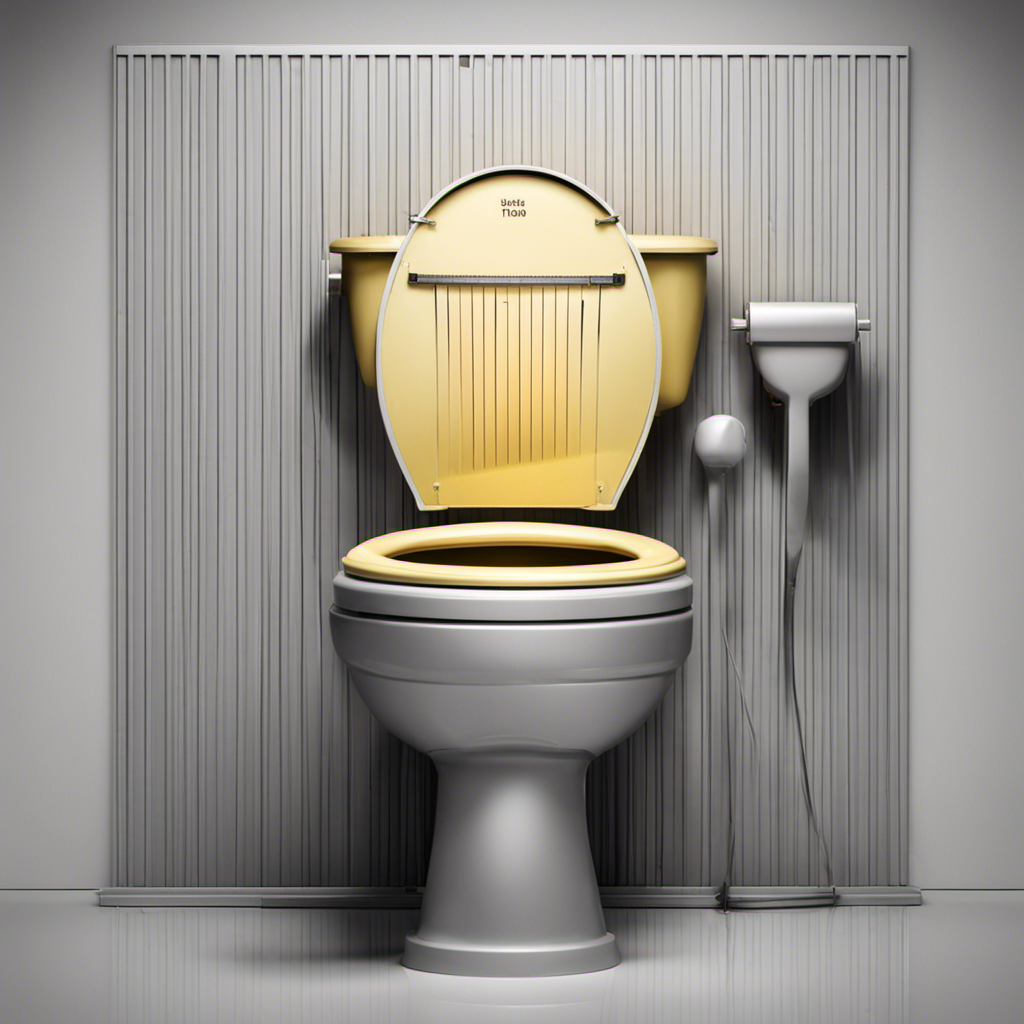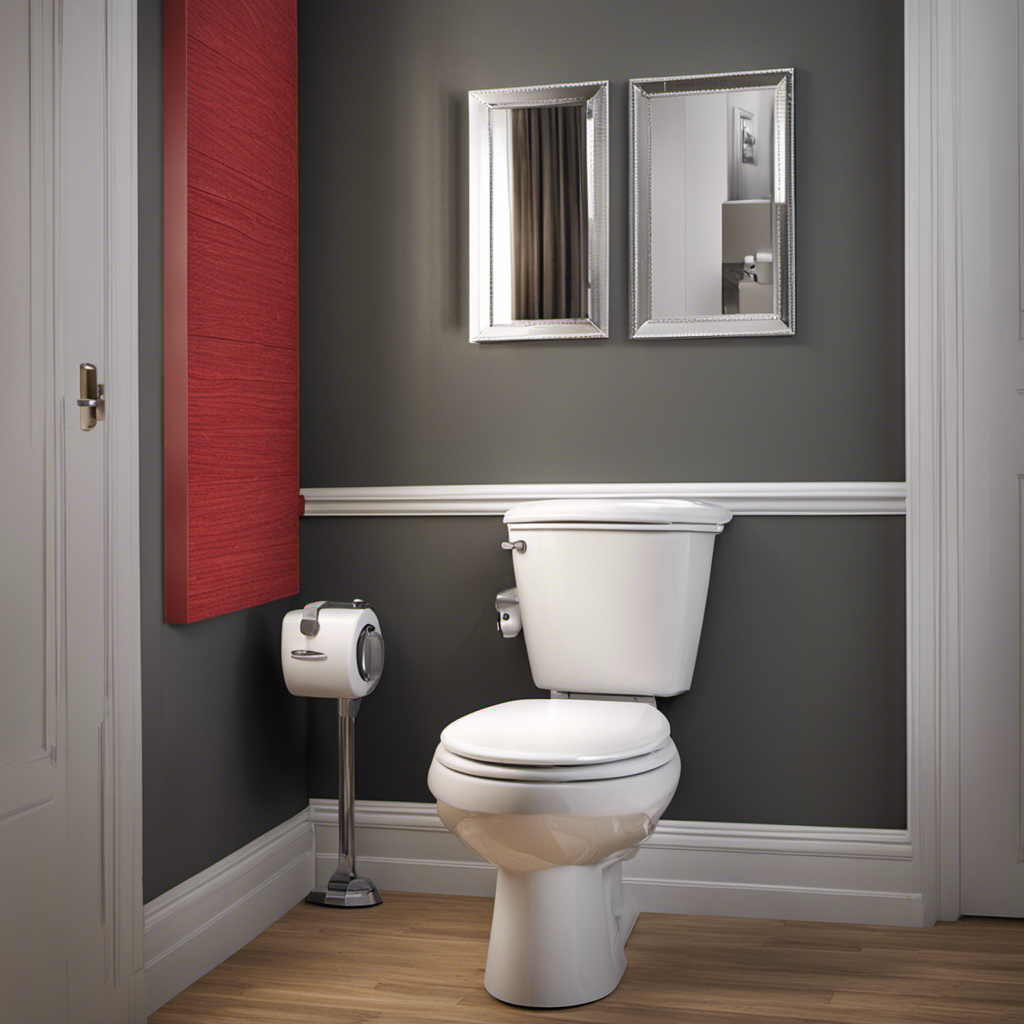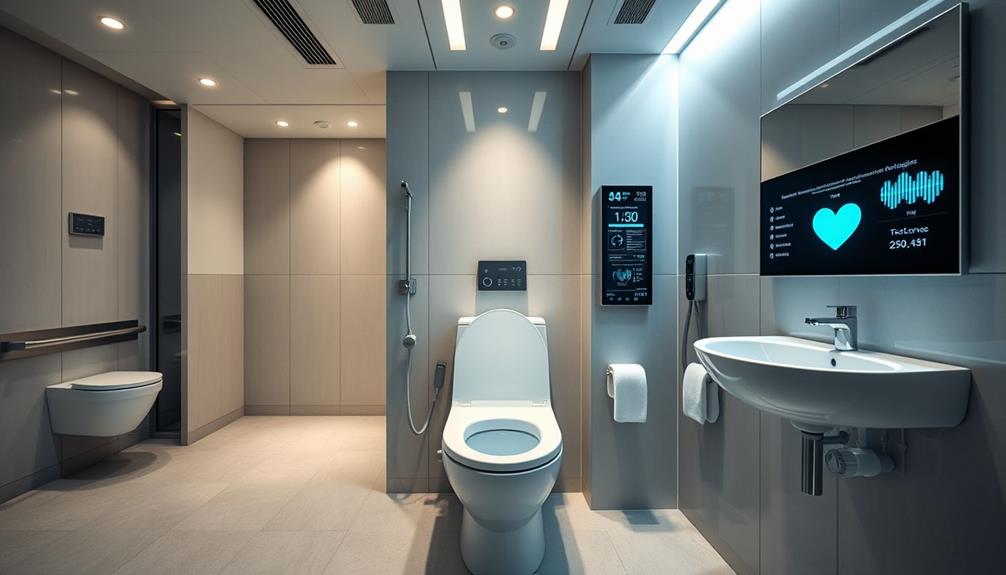As I stood in my bathroom, my heart sank as I watched the water rise higher and higher in the toilet bowl. The sound of the overflowing water echoed through the room, a symbol of the plumbing nightmare that was about to unfold.
In this article, I will share with you the causes of toilet overflow, common plumbing issues, and practical steps to prevent and fix this frustrating problem.
Don’t let a toilet overflow ruin your day – let’s dive in and tackle this issue head-on!
Key Takeaways
- Clogs in the pipes, excessive toilet paper, foreign objects, and mineral buildup can cause toilet overflow when flushed.
- Regular pipe maintenance and mindful flushing can help prevent toilet overflow.
- Water rising after flushing indicates a toilet clog, which can be addressed by turning off the water supply, using a plunger, and using a toilet auger if necessary.
- Installing a water-saving flush valve and scheduling regular plumbing inspections can help reduce the risk of toilet overflow.
Causes of Toilet Overflow
One of the main causes of a toilet overflowing when flushed is a clog in the pipes. When toilet clogs occur, they prevent the water from flowing smoothly through the pipes, causing a backup and ultimately leading to an overflow. This can happen due to various reasons, such as excessive toilet paper, foreign objects, or even mineral buildup over time.
Another factor that can contribute to a toilet overflowing is water pressure. If the water pressure is too high, it can create a forceful flush that overwhelms the pipes, causing them to become clogged and resulting in an overflow.
To prevent these issues, it is important to be mindful of what is being flushed and to regularly maintain the pipes to avoid any potential clogs.
Common Plumbing Issues
If you’re experiencing a plumbing issue, a common problem to look out for is when the water rises after you’ve pressed the lever. This could be a sign of a toilet clog that needs immediate attention. To address this problem, you will need to perform a toilet repair.
Here are some practical steps to follow:
-
Turn off the water supply: Locate the shut-off valve near the base of the toilet and turn it clockwise to stop the flow of water.
-
Assess the clog: Use a plunger to try and dislodge the blockage. Apply firm pressure and maintain a tight seal around the drain hole.
-
Use a toilet auger: If the plunger doesn’t work, a toilet auger can be used to break up the clog. Insert the auger into the drain and rotate the handle to clear the obstruction.
-
Flush and test: Once the clog is cleared, turn the water supply back on and flush the toilet to ensure everything is flowing smoothly.
How to Prevent Toilet Overflow
To prevent a toilet from overflowing, make sure you regularly maintain it by checking for any clogs or blockages. Here are four water-saving tips for toilet maintenance:
-
Use a plunger: Keep a plunger handy to quickly unclog any minor blockages. Apply firm pressure and plunge vigorously to dislodge the blockage and restore the proper water flow.
-
Avoid flushing non-flushable items: Toilets are designed to handle human waste and toilet paper. Avoid flushing items like wipes, sanitary products, or paper towels, as they can cause clogs and lead to overflow.
-
Install a water-saving flush valve: Consider replacing your old flush valve with a water-saving one. These valves use less water per flush, reducing the risk of overflow while also conserving water.
-
Schedule regular plumbing inspections: Hire a professional plumber to inspect your plumbing system regularly. They can identify potential issues before they become major problems, including toilet clogs or blockages.
By following these simple maintenance tips, you can prevent toilet overflows and conserve water.
Now, let’s move on to the steps to fix an overflowing toilet.
Steps to Fix a Overflowing Toilet
Now, let me guide you through the steps to fix your overflowing toilet.
When faced with a clogged toilet, it’s important to act quickly to prevent further damage and the need for emergency plumbing services. Here is a step-by-step guide to unclog your toilet:
-
Assess the situation: Determine if the toilet bowl is completely full or if the water level is slowly rising. This will help you understand the severity of the clog.
-
Stop the water flow: Locate the shut-off valve behind the toilet and turn it clockwise to stop the water flow. This will prevent any more water from entering the bowl.
-
Use a plunger: Place the plunger over the drain hole and firmly push down, then pull up quickly. Repeat this motion several times until the water starts to drain.
-
Flush and clean: Once the water has drained, flush the toilet to ensure the clog is completely cleared. Clean up any excess water and sanitize the area.
Signs of a Serious Plumbing Problem
When facing a serious plumbing problem, it’s crucial to seek professional help to prevent further damage. Recognizing early warning signs is essential in avoiding major plumbing issues. Here are four signs that indicate a serious plumbing problem:
-
Persistent clogs: If your drains are frequently clogged despite your best efforts to clear them, it could be a sign of a larger plumbing issue.
-
Low water pressure: A sudden decrease in water pressure could indicate a problem with your plumbing system, such as a leak or blockage.
-
Unpleasant odors: Foul smells coming from your drains or pipes may indicate a sewer line issue, which requires immediate attention.
-
Water discoloration: If your water appears discolored or rusty, it could be a sign of a corroded pipe or other plumbing problems.
When you notice any of these signs, it’s important to seek professional help promptly. A qualified plumber will be able to assess the situation accurately and provide the necessary repairs to prevent further damage to your plumbing system.
Frequently Asked Questions
Can a Clogged Sewer Line Cause a Toilet to Overflow When Flushed?
Yes, a clogged sewer line can cause a toilet to overflow when flushed. When the pipes are blocked, the water pressure increases, leading to backups and overflow. It’s important to address clogged pipes promptly to prevent further damage.
What Should I Do if I Notice Water Pooling Around the Base of My Toilet After Flushing?
If I notice water pooling around the base of my toilet after flushing, I would first check the toilet wax ring for any leaks or damage. If the ring is fine, I would inspect the toilet bowl for cracks.
Are There Any Specific Types of Toilet Paper That Are More Likely to Cause Toilet Overflows?
There are no specific types of toilet paper that are more likely to cause toilet overflows. However, using toilet paper alternatives like bidets or wet wipes can reduce the environmental impact of toilet paper.
Can a Faulty Toilet Flapper Valve Lead to Toilet Overflow?
Yes, a faulty toilet flapper valve can lead to toilet overflow. Signs of a faulty toilet flapper include water continuously running into the bowl and the need for frequent toilet flapper replacement.
Is It Possible for a Toilet Overflow to Cause Water Damage to My Bathroom Floor?
Yes, a toilet overflow can definitely cause water damage to your bathroom floor. It’s important to take preventive measures like regular maintenance and being aware of signs of water damage to avoid costly repairs.
Conclusion
After learning about the causes of toilet overflow, common plumbing issues, and how to prevent and fix this annoying problem, I now feel equipped to tackle any toilet emergency with confidence.
The knowledge gained is like a powerful tool in my hands, ready to save me from the flood of frustration.
No longer will I be left helpless in the face of a malfunctioning toilet.
I am armed with the understanding and skills to keep my bathroom calm and dry.










